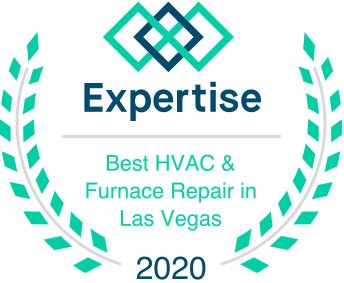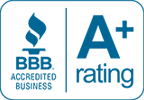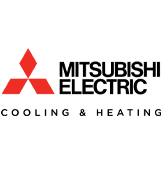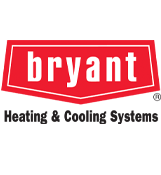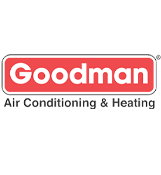
Responsible for distributing conditioned air throughout the building, your air handler contains the evaporator coil, air filter, and blower motor. It also serves as the connection point for the system’s return and air supply plenums. To help you take good care of the HVAC equipment in your Las Vegas, NV home, the following is everything you need to know about your air handler and its role in climate control.
How Your Indoor Air Handler Works
Air conditioners and heat pumps have outdoor condenser/compressor units. Found within condenser housing, compressors function as the heart of cooling systems by pumping refrigerant from end to end. You’ll find your AC or heat pump condenser on a level, concrete or composite somewhere close to your home. It’s here where refrigerant transitions from a high-pressure gas to a liquid. To compare, air handlers are installed indoors in dedicated closets, attics, or basements. They often closely resemble gas furnaces, and while compressors move refrigerant, these large, metal boxes move air.
The evaporator coils at the interior of air handlers also drive the heat transfer process. They contain icy refrigerant that extracts heat from warm air as it’s blown over them. Then, air handlers move this newly chilled air into HVAC air ducts for distribution.
Your HVAC Air Filter and Your Air Handler
If you have yet to perform your very first HVAC air filter change, you’ll need to know the location of your air handler. HVAC air filters should be inspected every 30 days and replaced as needed. For many households, this is about once every 30 to 90 days, but you should consult your owner’s manual or ask one of our technicians for a model-specific recommendation.
The air filter removes a variety of common allergens and contaminants, such as textile and carpet fibers, pet hairs, pollen, and dust. This protects the indoor air quality (IAQ), but it also protects the air handler’s sensitive, interior components, like its evaporator coil. Letting your air filter get too dirty could leave you with a low-performing, debris-covered evaporator coil that can’t transfer heat effectively.
You’ll likely find your HVAC air filter just between your air handler and your return plenum. Simply take your filter out, hold it up to the overhead light, and assess whether light can move through it. Air cannot pass through filter mesh that’s too dirty to permit light.
How Your Air Handler’s Blower Motor Moves Air
Blower motors rotate the blades of blower fans to push conditioned air into and through ducting. There are single-and-multi-speed blower motors. There are also electrically commutated motors (ECMs) or variable-speed motors that adjust their operating speeds to match changes in indoor conditions. Measured in revolutions per minute (RPMs), fan speeds have a significant impact on efficiency. Blower motors that operate at the same speed all the time use far more energy than variable speed options.
Common HVAC Air Handler Problems
The indoor air handler is the site of many common heat pump and AC problems. If your air conditioner or heat pump is short-cycling, it may have built-up debris on its evaporator coil that’s preventing the transfer of heat and causing the coil to freeze. Loud knocking and clanging sounds when your HVAC system is on could be the result of bent, broken, or misaligned fan blades, and jarring, clanking noises indicate loose parts.
Among the most common air handler problems are dirty HVAC air filters. When air filters have heavy, mat-like coatings of lint, dander, hair, and other build-ups, air conditioners and heat pumps have a hard time drawing air in and moving it. A dirty air filter can lead to overheating, high humidity, and shutdown. It will also have a noticeable impact on your home energy bill.
Dirty Evaporator Coils: “Champagne Bubbles” vs. Particulate Matter
Skipping routine HVAC air filter changes and neglecting to schedule professional AC or heat pump tune-up service will invariably leave you with a debris-covered evaporator coil. Although air filters capture and retain a fair number of indoor contaminants, many particulates pass right through them or enter air handlers in other ways. When filter debris becomes too thick and heavy, it can also get blown off and coat various components, including the evaporator coil.
For problems with icing, overheating, and short cycling, the air filter is the first thing to check. You can also inspect the evaporator coil to see whether accumulations of debris are blocking heat transfer. We remove built-up dust during maintenance and repair services. However, small, champagne-like bubbles on evaporator coils indicate refrigerant leaks and require more complex solutions.
Electrical Issues
Much like your outdoor condenser unit, your air handler has several electrical connections and wires. These wires could be damaged by rodents or other pests, or they may simply become frayed over time. Air handlers also have limit switches that act as conduits between thermostats and blower motors. When thermostats signal that the desired indoor temperatures have been reached, limit switches stop the production and circulation of cooled air. If your air handler’s limit switch is faulty, your AC or heat pump’s blower might run non-stop, erratically, or not at all.
Condensate Drain Problems
Many air conditioners and heat pumps have indoor condensate drain lines, just beneath their air handlers. As HVAC equipment extracts humidity, this moisture is routed through drain lines, into drain pans, and out of buildings via condensate drains. Due to their constantly moist interiors, these features are prone to developing problems with fast-growing bacteria and algae.
If your cooling equipment has a blocked condensate drain, it won’t be able to regulate your indoor humidity. You might have condensation-covered windows while your HVAC system is on and indoor air that feels clammy, muggy, and heavy.
How to Extend the Lifespan of Your Air Handler
There are several minor maintenance tasks that homeowners should regularly perform. These include HVAC air filter changes, basic care around the perimeters of outdoor condenser units, and the removal of built-up debris at and behind air vents. When checking and changing your air filter, take a minute to inspect your outdoor condenser unit for nearby debris, and for signs of pest infestation. The outdoor condenser unit should always have at least 24 inches of clearance on all sides. Airflow problems here can place undue stress on your indoor air handler.
Filter changes are also an opportunity to inspect HVAC air vents throughout the building. Make sure that none of your air vents are completely closed and wipe them down with a soft, damp cloth. You can also remove vent covers and gently vacuum behind them.
Schedule Routine AC or Heat Pump Maintenance
For everything else, it’s important to contact a licensed HVAC company. During routine AC and heat pump maintenance, we clean indoor air handlers both inside and out. We remove built-up debris from evaporator coils, test blower motors and blower fans, lubricate all moving parts, and replace worn components. We check for everything from faulty limit switches to evidence of coolant leaks. These visits limit the likelihood of serious repair issues and keep homeowners from accidentally voiding their equipment warranties. For all motor-driven equipment, even simply opening a motor’s housing and tampering with its moving parts can result in the immediate loss of warranty protections.
Since 1998, we’ve been proudly serving Las Vegas, NV and the surrounding cities. You can count on us for top-notch air conditioner and heater services. We also provide heat pump and ductless mini-split installation, indoor air quality improvements, and emergency HVAC repairs. If you suspect air handler problems, contact Polar Air & Heating, Inc. now to schedule an appointment.


